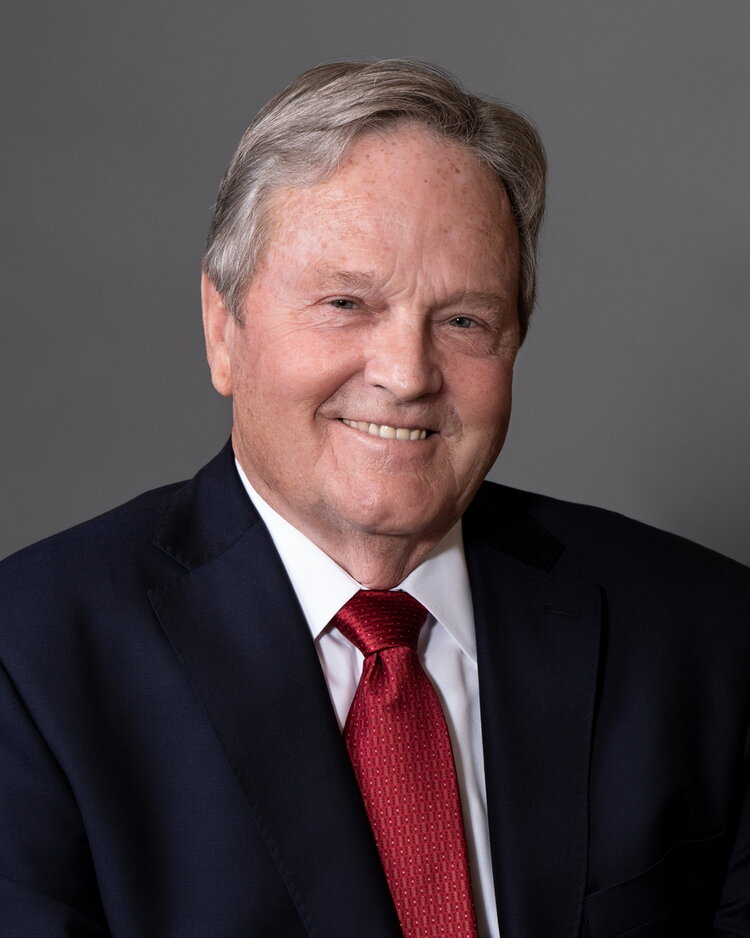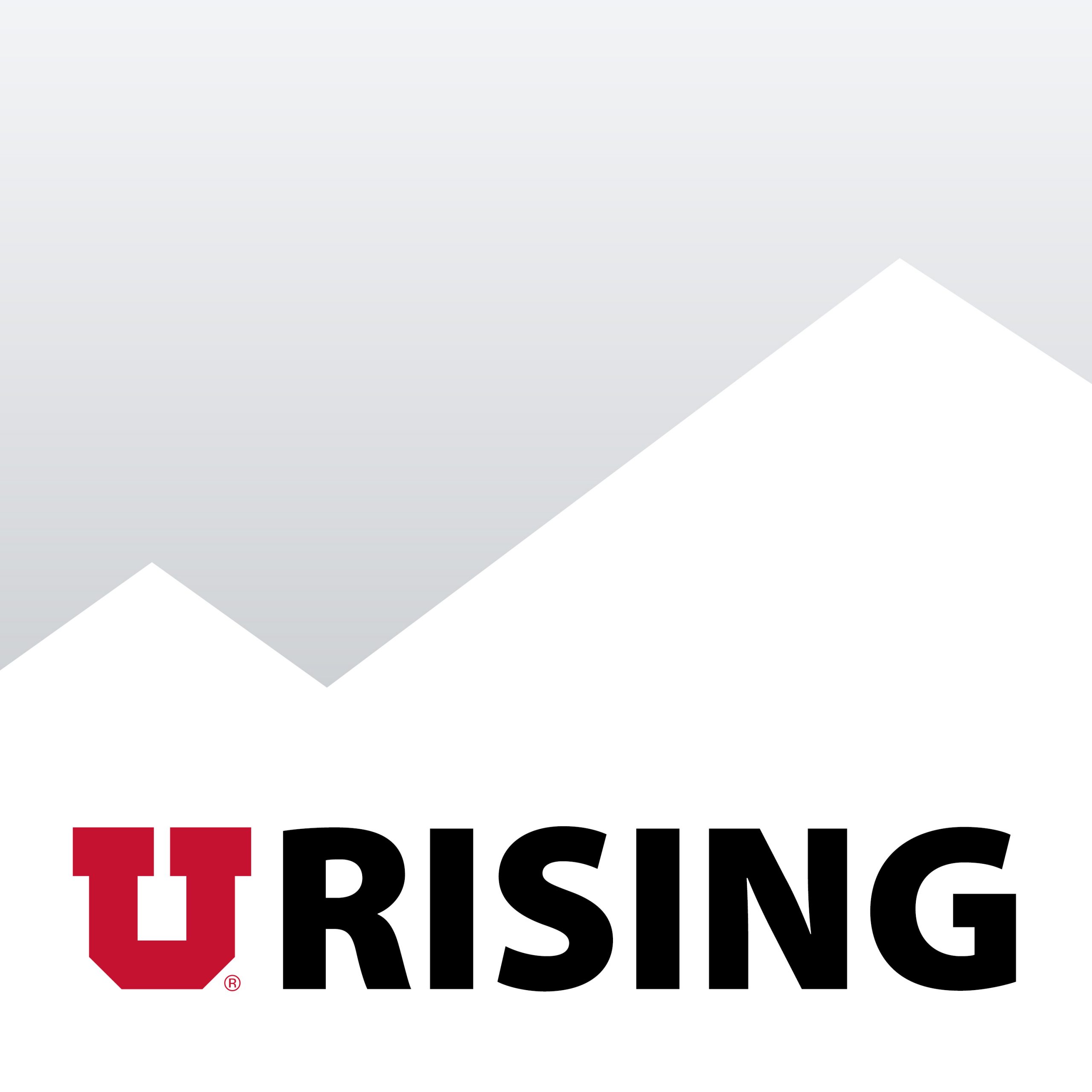
On the "U Rising" podcast, President Ruth V. Watkins engages in insightful conversations with students, staff, faculty, alumni and community stakeholders who are at the center of the state's flagship research university. President Watkins also connects with other leaders to give listeners a fresh take on top issues and innovations in higher education in Utah and across the country. You can subscribe to U Rising via iTunes, Spotify, Stitcher and other podcast streaming services.
Many Utahns may not realize the key role the University of Utah plays in providing the digital network infrastructure and tools used by education, telehealth, families and commerce throughout the state. This network and digital tools were significantly upgraded over the past year, thanks to the vision of the Utah Legislature. In this episode, Utah State Senator Jerry Stevenson joins Steve Hess, chief information officer at the University of Utah and for the Utah Board of Higher Education, and Ray Timothy, executive director of the Utah Education Network, to explain how they’ve worked to ensure Utahns have robust access to the internet and other digital tools during the pandemic, when online access became so critical. Recorded on Jan. 11, 2021. Thanks to Brooke Adams and Dave White for technical assistance. Original music by Taylor Hartley.
President Ruth Watkins: Hello, I'm Ruth Watkins, president of the University of Utah. We're going to talk today about a major initiative that took place this fall. The initiative was focused on improving network access across our state. I think there are many people that probably do not know about the role that the University of Utah plays in connecting networks across our state, and our guests are going to help us understand that a little bit better.
I'm so delighted to have three people with me today. Steve Hess, who's our chief information officer at the U, and he also serves as the chief information officer for the Utah Board of Higher Education.
And another guest, Ray Timothy. Ray is the executive director of the Utah Education Network. Ray, it's a pleasure to have you with me.
And our third guest, a superstar in the state of Utah, Senator Jerry Stevenson. He represents Davis County. He's also chair of the Executive Appropriations Committee and the Higher Education and Public Education Appropriation sub committees. Those are just many of the assignments that Senator Stevenson holds in the Legislature and he has served Utah for such a long time. Senator Stevenson, warmest welcome to you.
So, we call this UETN — Utah Education and Telehealth Network. Steve, I'm going to guess that a lot of our listeners have never heard of UETN or don't know what those letters mean and why it's so important in our lives. Could you tell us a little bit about why this matters so much to Utahns?
Steve Hess: UETN has been around a long time. It connects students to educational opportunity around the state. It started back in 1978 as the State Education Telecommunication Operations Center. It was started by the University of Utah. I think you all know the University of Utah was one of the first four nodes of the ARPANET. The ARPANET was the precursor of the internet. So, they were in a good position to understand networking and developed the network over the many years.
There's been a few kinds of dates that have really helped show the history of UETN. One is the combination of SETOC, the State Educational Telecommunication Operations Center, EDNET, Utah LINK. These all merged in, along with KUEN, to become the Utah Education Network. Part of the development network was set by the administration of Governor Michael Leavitt, who wanted to develop what he called the electronic highway.

We also know that UETN has an independent board, but it's a department of the University of Utah and supported by the U. And it has expanded throughout the state to where it now connects all of the public schools, K-12, technical colleges, institutions of higher education and public universities as well as patients and health care providers throughout the state. And UETN provides a very robust infrastructure and applications that support education and health care in the state.
Its purpose is to connect people and technologies to improve education and health in Utah. Now, when we started it, we called it the electronic highway. That's something that Governor Leavitt liked. He liked the metaphor because with a little money, in comparison to physical highways and road construction, we could add lanes to the electronic highway with much less expense.
This gave many more people access to educational opportunity and medical services, regardless of geographic location or time. Now, free of time and place, remember that. It continues to be the technological driver of the internet that has and continues to impact industry, government, business and now education. So, the internet over all has a very democratized effect on society, with great potential to give educational opportunity to underserved communities. And we are now much closer to achieving that goal.
And we really appreciate the opportunity to come and talk about networks because, as Ray can tell you, usually the only time that people want to know about networks is when they're down!
So, it become a vital lifeline to everything we do. So, we have about, by 2020, we connect 658,000 students K-12, more than 225,000 higher education students and more than 77,000 educators and staff from preschool through college. And the network also connects more than 70 hospitals, clinics and health departments. I think you know many doctors’ visits are now online.
And the great thing that we’ll talk about today a little bit is the past few months, the Legislature has been very kind and gracious to give us CARES Act funding. CARES Act stands for Coronavirus Aid Relief and Economic Security. And this has been much needed funding to update our systems. I think you know that in March, when we had to move online away from physical gatherings, the systems were up and available and we proceeded forward.
Now with these funds, we've been able to go forward and really improve our networks substantially and so special thanks to you, Senator Stevenson, the governor and the Legislature for helping us out on that.
President Watkins: So, I have to say the pandemic has made us all much more aware of the importance of networks. We are all using them all the time for education, for work, for health, and, of course, for business and industry. So really, really important time to make investments that improve quality and increase access through networks. Ray, I understand that the Utah Education Network is part of this larger system. Tell us about what you do with UEN.
Ray Timothy: Thank you, president. The Utah Education and Telehealth Network is made up of two organizations that have since been merged together by the Legislature. One side is the Utah Education Network, and the other side is the Utah Telehealth Network. That's why it's called Utah Education and Telehealth Network. About six years ago, the telehealth portion was added to our organization.
We've been charged by the Legislature to network for both education and telehealth in the state of Utah. It serves, as Steve has described, as a great equalizer. And it also allows us to use economy of scale and make sure that we're using our scarce state resources very wisely.
We are responsible on the education side of connecting every single public education organization and higher ed. We have K-12 and we have higher education, including all of the colleges and universities throughout the state. We're also responsible to help work with public libraries because that has an educational component for the general public. We also step in and help support at times the Department of Technical Services, DTS. The past legislative sessions that have been held virtually — we've been at the table and helped to develop the way that our legislators could continue to meet during the pandemic.
We have over 1,700 different locations for the education side. And again, any public school, any elementary, secondary, we're responsible to make sure that they're connected to the network. We also provide professional training for our teachers in how to use the network and how to enhance that educational experience for students.
President Watkins: That seems so important because without training, it will be hard for people to take full advantage of what is available. So well done. Well, Senator Stevenson, I think this is pure genius in terms of use of CARES funding to improve the network for Utahns. Was that a difficult decision to get done? And tell us a little bit about why you and your colleagues in the Legislature wanted to make this investment.
Senator Jerry Stevenson: Well, I'm going to pass the credit. I wish I could take the credit, but I can't. And, actually, the gentlemen that spoke just before I did should receive, I think, a big part of the credit. Jonathan Ball with our Legislative Fiscal Analyst’s office, he talked to us about how this would probably be a great place to invest some money in the state of Utah. And he introduced us, or we had a chance to speak with Ray, and he kind of got us on a really good track with this.
But let me give you just a very quick history. We've actually invested about $125 million of the CARES money that came into the state of Utah, which is about 10%. We received about $1.25 billion into the state of Utah.

And it was quite apparent that there was a gap in what we were seeing as far as virtual learning and virtual health care — that we were having problems filling that gap. And so, as we discussed a way to take and put this money to work for us, not only now, but in the future, this seemed like a very, very good place to put that money. So, we decided we would invest in the necessary infrastructure to make this very successful.
And we were far enough into the process that by the time the money came to us in April and May, that we could see that we had real inadequacies — that not all our students, not all our schools and not all of our medical providers had equal access to what we needed to make this move forward the way that it should.
So, we quickly decided that this would be a very equitable place to put those funds and it would be a place where all of the citizens of the state of Utah could benefit from the funds that came in. We were in a very unique position in the state of Utah because, as we come out of this pandemic, it was really important for us to recognize that we've had a great position moving into this. The state of Utah was in an amazing spot.
There were 49 other states that would love to be in the financial position that we were in the state of Utah. Maybe 48, Indiana may be close, but there's still a bit of a gap. We also recognize that we have people in the state that were on top of this for us with the conversation with our Fiscal Analyst's Office and also with Ray. And Ray, you were very instrumental in getting us moving forward and then picking up the ball after we decided where we needed to go with it. So, thank you very much, especially you were the one I had contact with early.
But this has been a great process and we've moved where we should be. So, with that, I'm sure you have other questions of others on the panel.
President Watkins: Well, senator, I just want to compliment you on really making a bold move, taking 10% of our CARES funds and making this investment in network infrastructure, is a big step and a very significant investment. We saw the digital divide gaps at the U in our students in ways that we did not expect. We really assumed that our students had ready internet access and were able to do things that they really were not all able uniformly to do.
So, I think you’ve made a wise investment for the long-term of the state, certainly for education and the workforce of the future. And also of course, for industry and commerce and keeping us well positioned in such a successful way for continued economic development.
Ray, perhaps you could talk just a little bit about what some of the enhancements are that you and Steve and others on the team have made with that $125 million, for sort of lay listeners to better what needs to happen with network enhancement and how you’ve gone about that.
Ray Timothy: It was a surprise to me when I was called to meet with the leadership of executive appropriations. And we were asked to put together a plan that would help education mitigate the impact of the pandemic. And so, we took that assignment very seriously. The other thing that they said was we don't want it to be a public education plan. We don't want it to be a higher education plan. We don't want it to be just for libraries. We don't want it to be just for telehealth. We want it to impact all of your stakeholders.
So that's exactly what we did, is we immediately met with those various institutions and we asked them what is it that you need at this time when we're having school closures, when we're doing video conferencing and we're teaching remotely? What is it that you need to have now as part of our plan?
And so, each of the organizations sat down and they put together their proposals and they submitted those to us. And those that we knew met the requirements of the CARES Act, we moved forward with those and those that did not, we let them know. But they all came down to basically the same needs. The first need was the infrastructure. Is there the capacity and the capabilities of connecting to the internet and having the opportunity to have a good quality educational opportunity for students?
We needed to make sure that with the increased utilization that we had the capacity to do that, that we had enough Wi-Fi connectivity, that students anywhere on campus would be able to access and be able to do their work.
The second thing that was obvious is they needed the tools to be able to move forward, they needed to have a digital capacity for instruction. They needed a learning management tool. So, we began negotiating for statewide contracts for tools such as Zoom for video conferencing, Canvas, Box, DocuSign, Qualtrics, MathWorks, on and on and on. Some of the very specific software and tools that they needed.
Once you have the infrastructure and the tools, they need to know how to use it. They need to be able to teach, they need to be able to access their students and have good communication and enrich that educational learning opportunities. So, we provided a lot of professional development for them.
Then connectivity for our students. That was a real question. President, you indicated that it became apparent that we did not have good connectivity for all of our students. We found that in higher ed throughout the state, there was at least 5%, if not more of our students, who had no devices. They didn't have a laptop; they didn't have a cell phone. They had no way of interacting with their instructors.
So, we used a large portion of that, almost all of the higher ed institutions requested funding to purchase laptops so that they could be checked out through the library systems at each institution. The area that we're still struggling with — and it's because it goes beyond our scope, we are to network and connect the institutions, public ed, higher ed — the area where we're still struggling is connecting at home. There are so many families that do not have the resources to be able to pay those connection fees for the internet.
And so we took, I believe it was about $30 million, and we contracted with the Utah State Board of Education because they have the data on students. They know the families; they know where they are. So, we contracted with them to find ways to provide internet access during the pandemic so that those students didn't fall behind. So those are the main things, the infrastructure, the tools, the training and the connectivity.
President Watkins: That's remarkable, Ray. Thank you. Now, Steve, if I said to you, what would you see on the horizon? What are our next priorities? Maybe connecting at home is going to be one. I'm guessing that's pretty important for telehealth and education, but you have a little bigger vision than I do. So, tell me about what you would see on the horizon next, Steve.
Steve Hess: Well, the weakest part of the network is the last mile, we call it, and that's the last connectivity. That's not totally within our control and maybe that's something the Legislature can help us out in the future. But we have what we call eduroam, which is an address that can be given to anyone, that means they can go to any school and be able to gain access to the Wi-Fi of the school and Ray and the Utah Education Network have spread that throughout the state.
And that's, of course, always been available to research universities and anywhere across the country. So that helps with, again, that last mile connection. We've also put in what we call Wi-Fi hotspots. So, at the University of Utah and many of the other institutions, now you can go to any place in any parking lot, sit in your car as a student and be able to pick up a good strong Wi-Fi signal to do your work. So, that's been a helpful thing.
We've also spent quite a bit of money on laptop loaners, Mi-Fis and personal equipment that can be leased out or taken out by students so that if they don't have the kind of access they need, at least they can get it that way. And that's been very, very helpful as well.
So those are some of the things we've done. We're also looking into new technology called 5G, which is in Salt Lake area of our community, something that they're beginning to roll out. We hope to maybe be piggyback on that and provide intensive connectivity to homes through 5G. I think that we have some pilot projects already down in Beaver County, I believe Ray, where that is taking place already.
So that's kind of where we're headed right now, but the nice thing is the backbone is now resilient, it's backed up, lots of capacity and for the next 12 years or so, we're in really pretty good shape going forward to carry a heavier burden of education and medical technology.
President Watkins: It's really extraordinary. Steve and Ray, thank you so much for what you've done. Senator Stevenson, thank you for the investments that you've made in helping us be a more effective state with education and health care and commerce using our network. And we really appreciate the leadership that you provide, Senator, with Executive Appropriations. We know you're about to get busy for the session. Any bigger previews you want to offer listeners today for the session ahead?
Senator Jerry Stevenson: First of all, this network will continue to grow and we will continue to fill in the blanks where, I'm sure, there are a few that we will discover as we get toward the build out and the completion of this money that we have allocated, as we get towards the end of spending that.
If I could, I think there's going to be additional CARES Act with the second stimulus package. I think we'll be able to use that to probably fill in some of the gaps that we have. And we will make sure that we can get that last mile that Steve talked about. I think it's very important. We understand that and we'd like to finish the things we started with the previous funding.
So, thank you very much for including me in this conversation today. All of you are near and dear to my heart. As I said earlier, Steve and I went to high school together. He looks much younger than I do, but he doesn't have the stress of the Legislature!
President Watkins: Well, Senator Stevenson . . .
Senator Jerry Stevenson: Thank you so much.
President Watkins: Thank you so much for your time, Senator Stevenson, and Steve, Ray, thank you for everything you've done. You have been very, very busy over these past months, making good use for Utahns with the new networking resources.
Listeners, thanks for joining us today and I hope you will tune in for the next edition of the U Rising podcast, where you're going to hear even more about the legislative session that is upcoming. We'll get a little bit of a preview in the next episode of the U Rising podcast. Thanks everyone.

